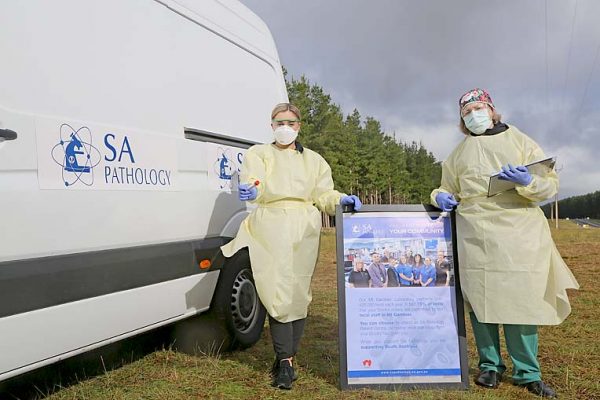

A SEWAGE-BASED testing scheme will be expanded to Mount Gambier to monitor the underlying level of COVID-19 in the community, the State Government has announced.
Health and Wellbeing Minister Stephen Wade said wastewater monitoring had the potential to provide officials with early warning signs of COVID-19 and an indicator of increased prevalence in the community should an outbreak occur.
Mr Wade said wastewater sampling – which is already used to detect illegal drug use in communities – had proven to be an effective way to monitor COVID19 in targeted areas.
“We have expanded our surveillance methods to focus on the border with Victoria to ensure we have a clear picture of the levels – if any – of COVID-19 in the surrounding communities,” he said.
“The earlier the warning that someone has COVID-19, the quicker our public health team can respond.”
Mr Wade said high levels of testing had played and important role in keeping South Australians protected from the spread of the disease.
He said SA Pathology’s robust response to the pandemic has been bolstered by the establishment of three mobile testing clinics at key border crossings, including Mount Gambier and Bordertown.
Health and Wellbeing Department principal water quality adviser Dr David Cunliffe said wastewater testing was ongoing at four wastewater treatment plants across the state.
“We detected low-level positives in samples collected and stored from two metropolitan treatment plants from when there were significantly more local cases earlier this year,” he said.
“We also detected low-levels of COVID-19 in one of our quarantine facilities when we knew three positive cases were isolating there.
“In the last two weeks, SA Water has used these samples to validate the method, giving us confidence in the accuracy of our results.”
SA Water water expertise and research senior manager Dr Daniel Hoefel said developing a working detection method in a short time frame was a credit to both the expertise of the utility’s scientists and the Australian water industry’s collaborative spirit.
“Our technique includes concentrating the sewage samples, extraction of the virus’ nucleic acid and detection using a specialised test known as polymerase chain reaction, before applying cuttingedge nucleic acid sequencing to verify the results,” he said.
“With our surveillance tool deployed across multiple metropolitan and regional areas, we’ll keep a keen eye on South Australia’s sewage for any signs of the virus re-emerging while continuing to improve the methodology.”







